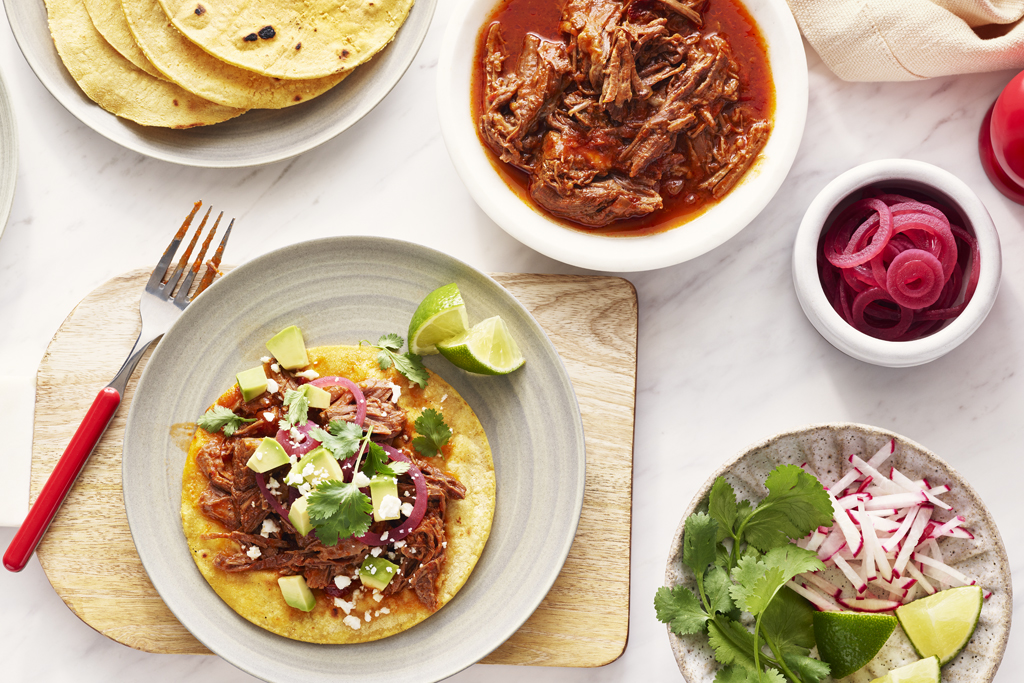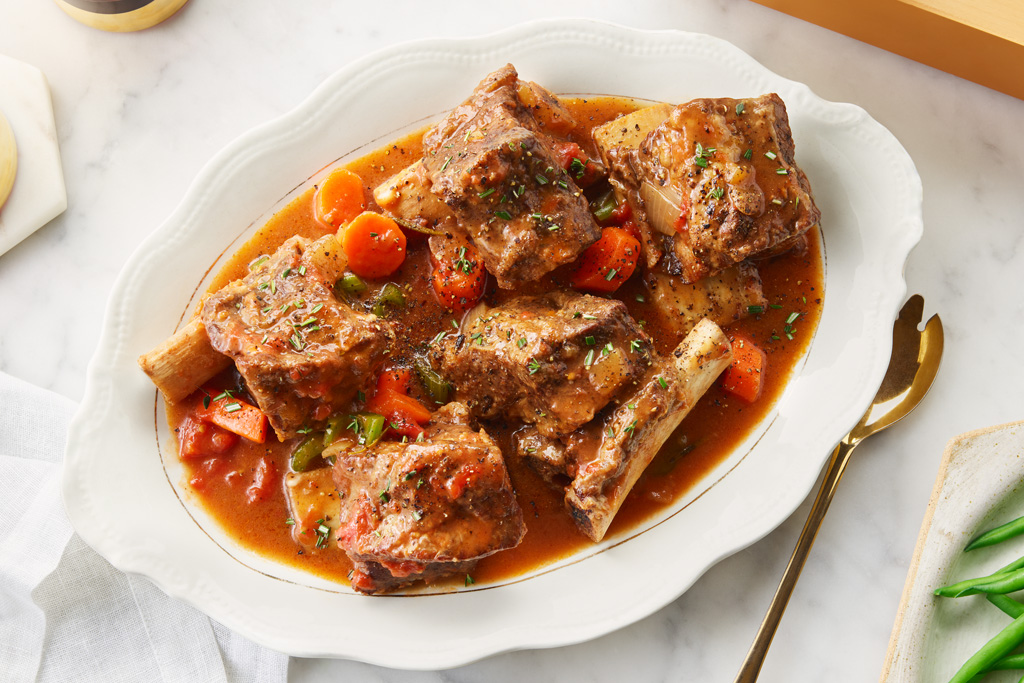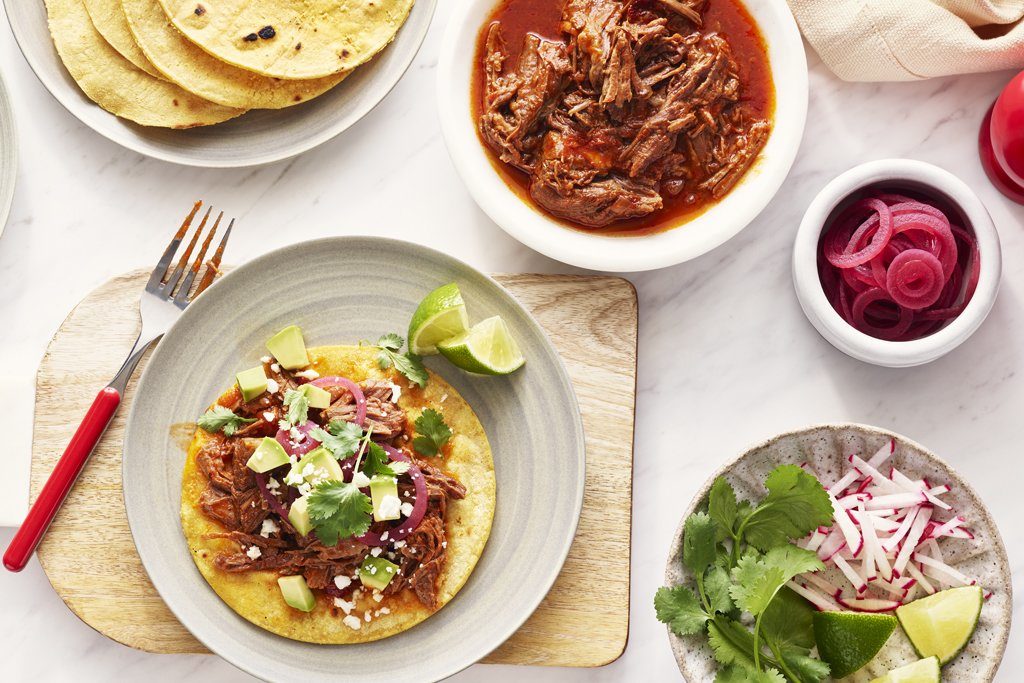10 Tips to Know
Campbell’s has spent many hours developing delicious recipes for the Instant Pot®, and we want to share what we’ve learned! We recognize that there is huge interest in the appliance, and home cooks are searching to understand the Instant Pot®’s functions, and they want to find great recipes. However, with the array of recipes online, how do you know which recipes to trust? That’s where Campbell’s comes in! We’ve tested this appliance to understand what there is to know when developing new recipes and adapting some existing recipes to truly maximize what the Instant Pot® does best. Because our recipes have been thoroughly tested, we’re confident that you’ll have a successful (and delicious) Instant Pot® experience!
Here’s some of our best advice:
- When using the pressure cooker function, remember that it takes 10 to 15 mins. to get the Instant Pot® up to pressure. Be sure to factor that time into your recipe.
- When cooking time is complete, there are two methods that can be used to release pressure in the Instant Pot®. Natural release will slowly release pressure so there is less movement in the pot. This method is good for recipes such as soup and dishes with high starch content including rice dishes or oatmeal. Manual release or quick pressure release works well when you want to quickly stop the cooking process to prevent overcooking. This is beneficial for many types of vegetables or seafood.
- The Instant Pot’s sauté function is a feature that can save time and effort. You can easily brown meats or sauté garlic or onions right in the pot before adding the additional ingredients.

- When braising meats, let the pressure come down naturally for 10 to 15 mins. to allow juices to distribute back into the meat.
- To convert conventional pressure cooker recipes into Instant Pot®-friendly ones, reduce the amount of liquid called for by 15%, and cut any wine or alcohol by half as it doesn’t evaporate as much in an Instant Pot®. But make sure that you have at least ½ cup of liquid in the pot to ensure proper temperature and pressure.
- Since liquid doesn’t evaporate as much in an Instant Pot®, you may need to thicken with a mixture of cornstarch or flour and broth or stock. Before serving, remove the lid and any large pieces of meat or vegetables and bring the liquid to a boil on the Sauté setting. Whisk in the thickening mixture and boil until desired consistency is reached.
- To prevent curdling, add any dairy products at the end of cooking. And for enhanced flavour, use broth or stock instead of water in recipes.
- When slow cooking or pressure-cooking meats, avoid filling the Instant Pot® more than 2/3 full so that proper pressure is reached and maintained. If cooking dried beans, fill no more than ½ full to allow for the beans’ expansion.
- Based on extensive recipe testing, our team learned that, depending on the recipe and its ingredients, the way ingredients are placed in the cooker makes a difference to the recipe’s outcome – due to built-in mechanisms in the Instant Pot®, the process in which ingredients are added can sometimes trigger a “burn” or “error” message. That’s why, in some recipes, we may say to “stir” ingredients into the pot; in others we may note to “layer” them. And in some cases, we may even say “do not stir”. And in testing recipes with condensed soup, we discovered that the soup’s thickness can prevent it from coming to a boil, causing heat to build up at the bottom before the top starts to bubble. This can sometimes prevent the pot from coming up to pressure and a result in a “burn” message. Therefore, for optimum results, we recommend following the recipe instructions closely.
- Keep the Instant Pot® in an open area of the kitchen when in use – prolonged exposure to steam and heat can cause damage to the undersides of cabinets, walls and countertops.
- While pressure cooking and slow cooking are perhaps the most commonly used functions of the Instant Pot®, there are other options that are worth exploring – Sauté is terrific for browning vegetables and meats before pressure or slow cooking, or for making quick-cook skillet-style recipes. The low temperature of the Yogurt setting allows you to make homemade yogurt in as few as 8 hrs.! There are also settings for Rice, Steam, Porridge, Multigrain, Poultry, Broth/Soup, Meat/Stew, and Bean/Chili. (Consult the instruction manual for specific instructions pertaining to each setting.)

Regardless of whether you’re an Instant Pot® expert or are ready to embark on a new cooking adventure, we think you’ll enjoy these recipes developed especially for Instant Pot® cooking!

